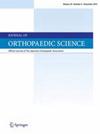一项患者和公众参与的研究,旨在探讨患者对脊柱后纵韧带骨化引起的疼痛和麻木的治疗效果的看法。
IF 1.5
4区 医学
Q3 ORTHOPEDICS
引用次数: 0
摘要
背景:慢性疼痛和麻木是脊柱后纵韧带骨化症(OPLL)患者的常见症状。然而,目前的治疗方法是否能有效改善 OPLL 患者的疼痛和麻木尚不清楚:方法:对 OPLL 患者进行了一项横断面调查,以确定患者对手术和药物治疗疼痛和麻木的满意度,及其与健康相关的生活质量的关系。调查由患者协会及其成员进行,匿名数据由医生进行分析。组间比较采用T检验或Kruskal-Wallis和Steel-Dwass检验、卡方检验和费雪精确检验:分析了 121 名完成邮寄问卷的 OPLL 患者(年龄 69 ± 11 岁,69 名男性;43 名女性;7 名未知)的数据。在 93 名有 OPLL 手术史的患者中,分别有 24% 和 18% 的患者表示疼痛和麻木有很大改善。手术后,分别有 42% 和 48% 的患者表示有所改善,34% 和 34% 的患者表示没有改善。手术后麻木症状没有得到改善的患者,其健康相关生活质量明显低于麻木症状得到改善的患者。在接受药物治疗的78名患者中,只有2%的患者表示 "有很大改善",64%的患者表示 "有一些改善",31%的患者表示 "完全没有改善"。与仅患有颈椎OPLL的患者相比,弥漫型OPLL患者术后麻木症状改善较差,生活质量也较差:结论:在疼痛和麻木的改善方面,属于该协会的大多数OPLL患者对手术和药物治疗并不满意,这表明OPLL患者对更有效的慢性疼痛和麻木治疗的医疗需求尚未得到满足。本文章由计算机程序翻译,如有差异,请以英文原文为准。
A patient and public involvement study to explore patient perspectives on the efficacy of treatments for pain and numbness derived from ossification of posterior longitudinal ligament of the spine
Background
Chronic pain and numbness are common complaints in patients with ossification of the posterior longitudinal ligament of the spine (OPLL). However, it is unclear whether the current treatments are effective in patients with OPLL in terms of improving pain and numbness.
Methods
A cross-sectional survey of patients with OPLL was conducted to determine patient satisfaction with surgery and drug therapy for pain and numbness, and its association with health-related quality of life. The survey was conducted by a patient association and its members, and anonymized data were analyzed by physicians. Comparisons between groups were made using T-tests or Kruskal–Wallis and Steel–Dwass tests, chi-square tests, and Fisher's exact tests.
Results
Data from 121 patients with OPLL (age 69 ± 11 years, 69 males; 43 females; and 7 unknown) who completed a mailed questionnaire were analyzed. Of the 93 patients with a history of surgery for OPLL, 24% and 18% reported much improvement in pain and numbness, respectively. After surgery, 42% and 48% reported some improvement, and 34% and 34% reported no improvement, respectively. Patients whose numbness did not improve with surgery had a significantly poorer health-related quality of life than those who did. Of the 78 patients who received medication, only 2% reported “much improvement,” 64% reported “some improvement,” and 31% reported “no improvement at all.” Compared to patients with OPLL only in the cervical spine, those with diffuse-type OPLL showed poorer improvement in numbness after surgery and poorer quality of life.
Conclusions
The majority of patients with OPLL belonging to the association were unsatisfied with surgery and pharmacotherapy in terms of pain and numbness improvement, indicating that there is an unmet medical need for more effective treatment for chronic pain and numbness in patients with OPLL.
求助全文
通过发布文献求助,成功后即可免费获取论文全文。
去求助
来源期刊

Journal of Orthopaedic Science
医学-整形外科
CiteScore
3.00
自引率
0.00%
发文量
290
审稿时长
90 days
期刊介绍:
The Journal of Orthopaedic Science is the official peer-reviewed journal of the Japanese Orthopaedic Association. The journal publishes the latest researches and topical debates in all fields of clinical and experimental orthopaedics, including musculoskeletal medicine, sports medicine, locomotive syndrome, trauma, paediatrics, oncology and biomaterials, as well as basic researches.
 求助内容:
求助内容: 应助结果提醒方式:
应助结果提醒方式:


